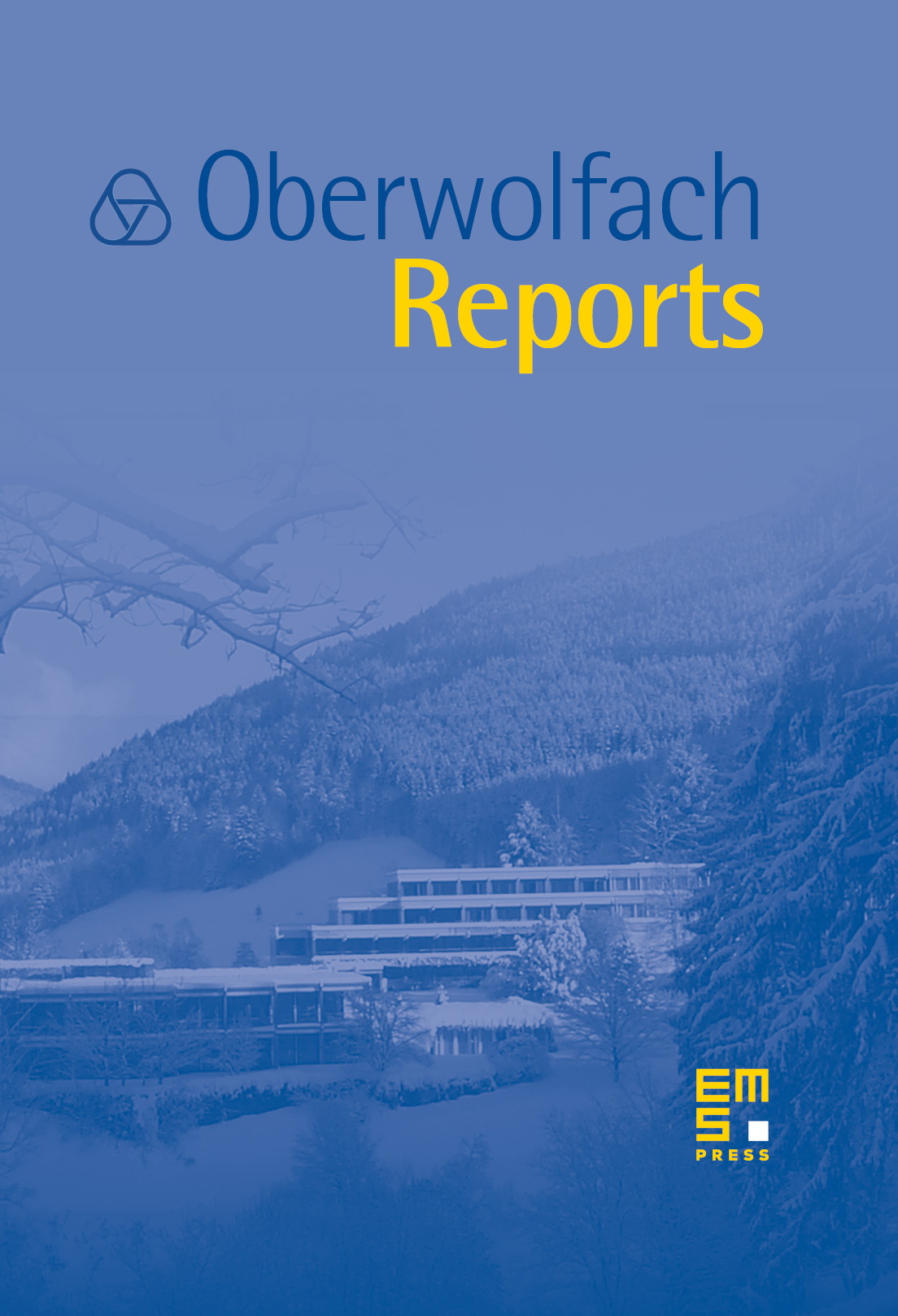Reelle Algebraische Geometrie
Michel Coste
Université de Rennes I, FranceClaus Scheiderer
Universität Konstanz, GermanyNiels Schwartz
Universität Passau, Germany

Abstract
This workshop was the seventh of its kind held in Oberwolfach (after 1984, 1987, 1990, 1993, 1997 and 2002) and was attended by 52 participants from Europe and North America, among them 20 young post- docs and graduate students. The meeting comprised 25 talks of 50 minutes each, with a strong emphasis on recent progress and new directions. We try to give a brief overview of the topics involved:
1) Real enumerative geometry and tropical geometry
Enumerative geometry is concerned with counting the number of solutions to algebro-geometric problems. One very active topic is counting the number of rational curves passing through prescribed points (and variations thereof). The Welschinger invariants are the real analogue of Gromov–Witten invariants in complex geometry. Calculating both the complex invariants and their real counterparts was related to tropical geometry by Grigory Mikhalkin in his celebrated correspondence theorem. The talks of Erwan Brugallé, Ilia Itenberg and Jean-Yves Welschinger were devoted to these problems. Frédéric Bihan reported about improved fewnomial bounds, i.e. bounds on the number of solutions to sparse polynomial systems that depend only on the number of monomials involved. Alex Degtyarev and Andrej Gabrielov gave talks on applications and generalisations of Grothendieck's dessins d'enfant.
2) Positivity and Sums of Squares
Representations of positive polynomials involving sums of squares of polynomials provide certificates for positivity that are interesting both theoretically and for numerical purposes. On the other hand, a classical result of Hilbert states that not every positive polynomial in more than one variable is a sum of squares. A constructive approach to this theorem was presented at the workshop by Bruce Reznick. Recent developments in this field were presented by Salma Kuhlmann, Vicky Powers, Marie-Françoise Roy, and Markus Schweighofer. The talk of Igor Klep was concerned with positivity and sums of squares in a non-commutative setting, relating such questions to a famous conjecture by Alain Connes about von Neumann algebras.
3) Topology and singularities of real varieties
Much research in this area is concerned with finding topological properties that characterise real algebraic sets or particular classes of varieties. Wojciech Kucharz spoke about the question which homotopy types of maps between real varieties are represented by algebraic morphisms. The talk of Benoît Bertrand was devoted to generalizations of Viro's patchworking method for constructing real varieties with a prescribed topology, and Nicolai Vorobjov reported on an effective version with explicit bounds of a theorem due to Coste and van den Dries that bounds the number of homotopy types of semialgebraic sets in terms of the complexity of the polynomial description. Riccardo Ghiloni spoke about semialgebraic deformations of real algebraic sets and presented a proof of the fact that every real algebraic set is semialgebraically homeomorphic to an irreducible one. Johannes Huisman addressed the problem of determining all rational real algebraic models of a topological surface, proving the uniqueness of such models for a large class of surfaces. Frédéric Mangolte spoke about real singular Del Pezzo surfaces and threefolds fibred by rational curves. Adam Parusiński reported on a complete classification of blow-analytic equivalence classes of function germs in two variables.
Other topics included a talk by Daniel Schaub on the Pierce–Birkhoff conjecture, which asks whether every piecewise polynomial function can be expressed as a surpremum of infima of polynomials. José Fernando spoke about semialgebraic analogues to classical results on rings of continuous functions and Andreas Fischer about analytic approximation results in o-minimal structures. Jean-Philippe Monnier presented a real version of the Riemann–Hurwitz inequality for the number of fixed points of an automorphism of an algebraic curve, allowing for more precise results in the real case that involve the number of connected components of the real locus. Vladimir Kostov's talk was concerned with the Schur–Szego composition for polynomials in one variable, especially those that have only real roots. Krzysztof Kurdyka spoke on trajectories of subriemmanian gradients of polynomials.
The schedule of the meeting left plenty of time for numerous discussions among the participants. There was no official programme beyond the talks (except the traditional hike on Wednesday afternoon) but many participants worked together in small groups in the seminar rooms until late in the evening. Several collaborations were continued and some new ones were started.
We cordially thank the Oberwolfach Institute and its staff for the splendid atmosphere they provided and gratefully acknowledge the financial support for young researchers.
Cite this article
Michel Coste, Claus Scheiderer, Niels Schwartz, Reelle Algebraische Geometrie. Oberwolfach Rep. 4 (2007), no. 1, pp. 753–820
DOI 10.4171/OWR/2007/14